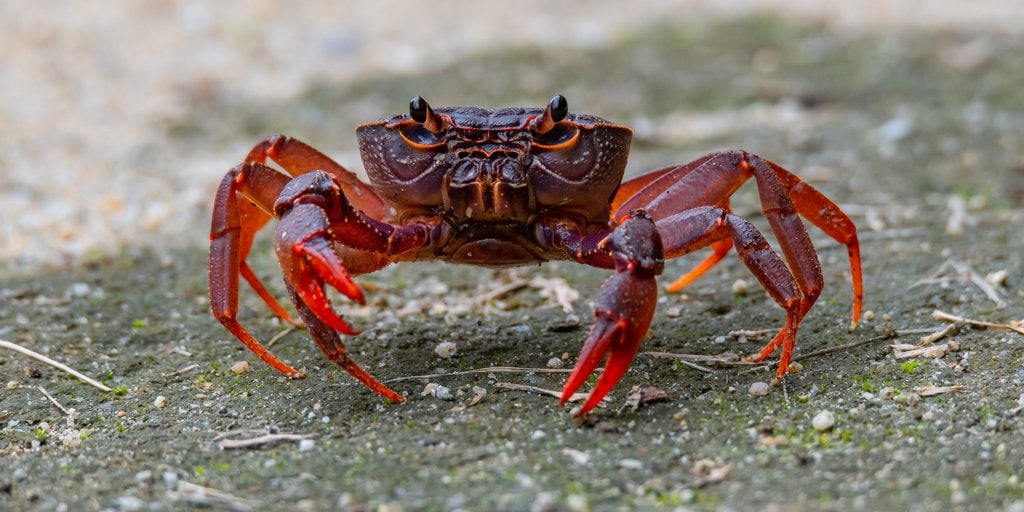Crabs have a flat, rounded shell and a folded tail. This body plan has evolved multiple times among decapod crustaceans, including crabs, lobsters, and shrimp. This phenomenon is called carcinization. Scientists have many theories but are unsure why animals frequently adopt crab-like forms.
Crabs Evolve Again and Again

Carcinization exemplifies convergent evolution, where distinct groups independently develop similar characteristics. This is akin to how bats and birds both evolved wings. Interestingly, the crab-like body structure has emerged multiple times in closely related species. This occurrence on a small scale highlights the adaptability and dynamism of evolution.
Crustaceans have frequently transitioned from a cylindrical body shape with a large tail, commonly seen in shrimp and lobsters, to a flatter, rounder appearance resembling crabs. In this process, their tails become less prominent. As a result, various crustaceans, such as the highly desired king crab enjoyed as a seafood delicacy, are not technically classified as “true crabs.” They have embraced a crab-like body structure but actually belong to a closely related group of crustaceans known as “false crabs.”
Not All Crabs Are True Crabs

Persistent advantageous traits in animals signify the principle of natural selection. Crab-like crustaceans thrive in diverse habitats and exhibit various sizes. Their unique body plan, with a tucked-in tail and a flat, rounded shell, offers benefits such as reduced vulnerability to predators and improved sideways mobility compared to lobsters. Still, more research is needed to test this hypothesis.
Genetic data aids in comprehending the connections between different decapod crustaceans, determining the timing of crab-like lineages’ emergence, and unraveling the drivers behind carcinization. The advantage of possessing a crab-like body may not necessarily lie in the body plan itself but as an outcome of other factors within an organism. For instance, the success of the crab body structure may stem from the opportunities it provides for other body parts rather than the shape of its shell or tail.
More Examples

Another good example is how a lobster has a large tail, which aids in swimming and prey-crushing. However, this prominent tail can also hinder the development of other features. On the other hand, the crab body shape provides greater flexibility, enabling animals to evolve specialized functions for their legs beyond walking. This adaptability allows crabs to adjust to different habitats. Certain crabs have modified their legs for activities like digging in sediment or propelling through the water.
The frequent independent evolution of the crab body plan attributes to the remarkable versatility exhibited by these animals. This adaptability enables them to explore and inhabit unique environments beyond the reach of other crustaceans. Furthermore, the crab-like body structure has been lost over evolutionary history, called decarcinization. Crabs and other crustaceans possess various interchangeable components, allowing for the relatively straightforward transformation from a cylindrical body to a flattened one, and vice versa, without drastically altering other characteristics.